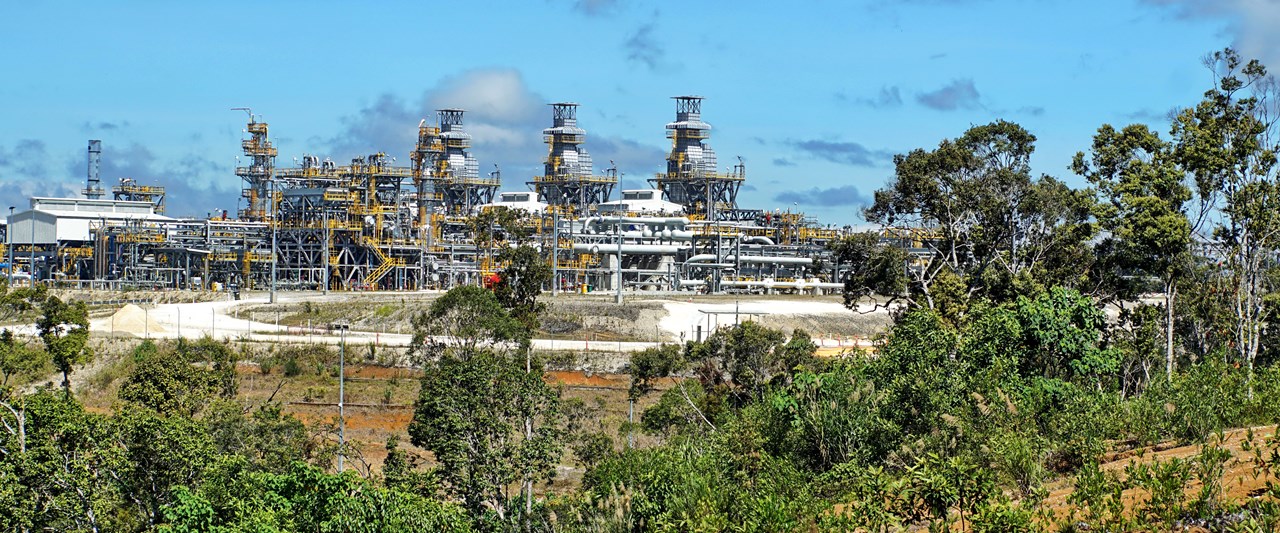Oil minister Kerenga Kua has pledged to re-examine controversial deal following the collapse of scandal-hit government
The newly elected Papua New Guinea (PNG) government wasted no time in announcing it will review the recently signed Papua LNG agreement—as well as the country’s wider hydrocarbon regulatory framework—fuelling speculation the project will face extended delays. The announcement was made barely a month after prime minister Peter O’Neill was forced to resign from office following a parliamentary vote of no confidence. Details from a report carried out by the Ombudsman Commission revealed O’Neill had failed to consult his government on a $1.2bn loan, unconnected to LNG projects, issued by Swiss bank UBS five years previously. Former finance minister James Marape, who had earlier defected from O’Neill’s administration over the gas expansion project, was also named in the report. Nonetheless, he was unanimously elected by parliament to be the new prime minister. The timing of the political fallout could scarcely be worse for Papua LNG’s partners. In April, the government finally signed an agreement to begin front-end engineering design (Feed) development on the $13bn expansion project, which is projected to double LNG exports. A 7.5 magnitude earthquake in February 2018 had already delayed the agreement. Under the arrangement, the project partners would target around 1bn bl oe of gas from the Total-operated Elk-Antelope fields, in the Eastern Highlands, which will then be fed into ExxonMobil’s LNG plant at Caution Bay. A further two trains of 2.7mn t/yr are planned to be added to the facility, with a final investment decision (FID) expected to be made in 2020.
Hostile reception
Domestic opposition to the project remains strong. “The failure of earlier projects to live up to expectations has generated public and political frustration, which is driving the shift in outlook,” says Joseph Parkes, Asia analyst at Verisk Maplecroft. A Jubilee Australia Research Centre report in April 2018 found that the economic benefits of the previous project, PNG LNG, have fallen well below expectations. PNG’s economy only grew 10pc since the project’s completion in 2014, despite predictions it would double. Household income and government expenditure on education, health, law and infrastructure even fell 6pc and 32pc, despite previous expectations they would increase 84pc and 85pc respectively. The report revealed that government spending plans factored in tax revenues that never appeared. The figures were surprising considering the project was completed ahead of schedule and by 2017 was outputting 8.3mn tonnes of LNG—a 20pc increase over the original capacity specification of 6.9mn t/yr. The project was also affected by the 2018 earthquake, which disrupted operations and forced ExxonMobil to close its export terminal. But although 2018 output dropped 15pc year-on-year, according to the World Bank, maintenance at the Hides gas conditioning plant and LNG trains was brought forward and over the second half of the year output swiftly recovered. Oil Search reported an average annualised rate of 8.8mn t/yr, almost 30pc above nameplate capacity.
Economic importance
Conflict over land claims and royalty payments continues to drive pressure on the government to renegotiate the agreement. In June 2018, armed civilians in Angore, Hela Province, damaged equipment at ExxonMobil’s pipeline project. Around 97pc of land in Papua New Guinea is classified customary tenure, owned by indigenous communities, which makes royalty payments central to the development of large-scale projects such as Papua LNG. But Shane McLeod, project director at Lowy Institute, an Australian think tank, says the government will be reluctant to delay or reverse any deal. “The new leadership is pro-development and has said it just wants to ensure there are good returns for landowners and local interests.” The government has prioritised improving access to electricity across the country and the development of natural gas is its chosen route. “10pc of [new] output will be going to domestic use. For Port Moresby, that will be transformational,” says Anton Safronov, former head of operations at Total’s Papua LNG project development. The government plans to increase access to electricity to 70pc of the country by 2030. Around 20pc of power capacity from PNG LNG currently supplies Port Moresby. Expansion of the project into the P’nyang field will also depend on interruptions to the current deal. In December, an assessment raised gas reserves there 84pc to 4.36tn ft3. Likewise, the government is aware of the growing number of competing LNG projects. “Total and ExxonMobil have so many LNG development opportunities globally at the moment,” says David Hewitt, head of European oil and gas research at Australian bank Macquarie. “We expect the PNG government to be aware of [oil companies’] other opportunities when it considers how to deal with gas agreement discussions.” https://www.petroleum-economist.com/articles/politics-economics/asia-pacific/2019/incoming-government-raises-papua-lng-doubts?hootPostID=462dd833b4a042d78c047690cdd1b952



